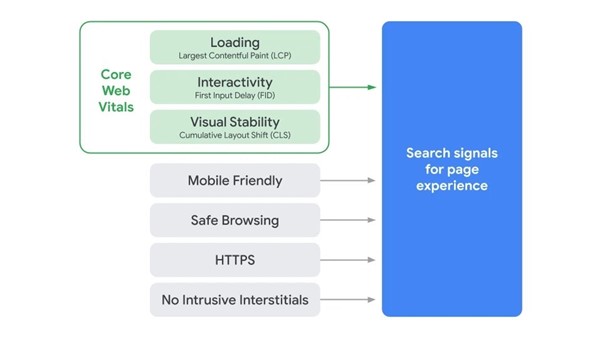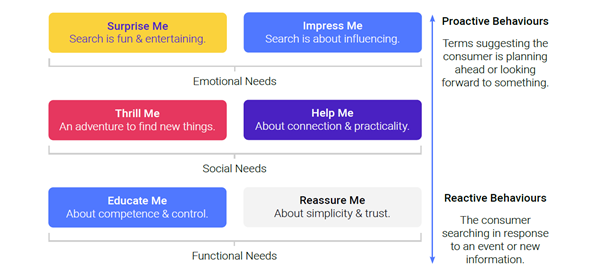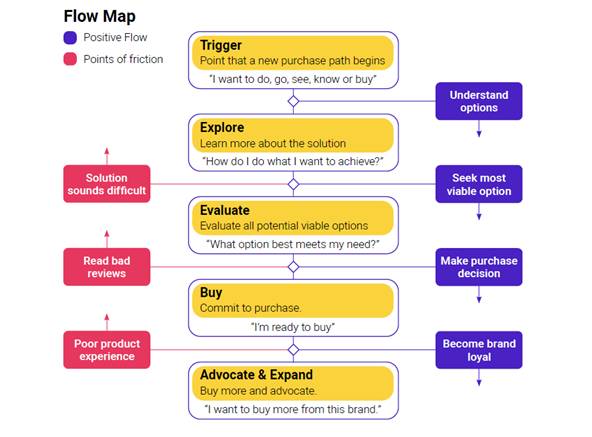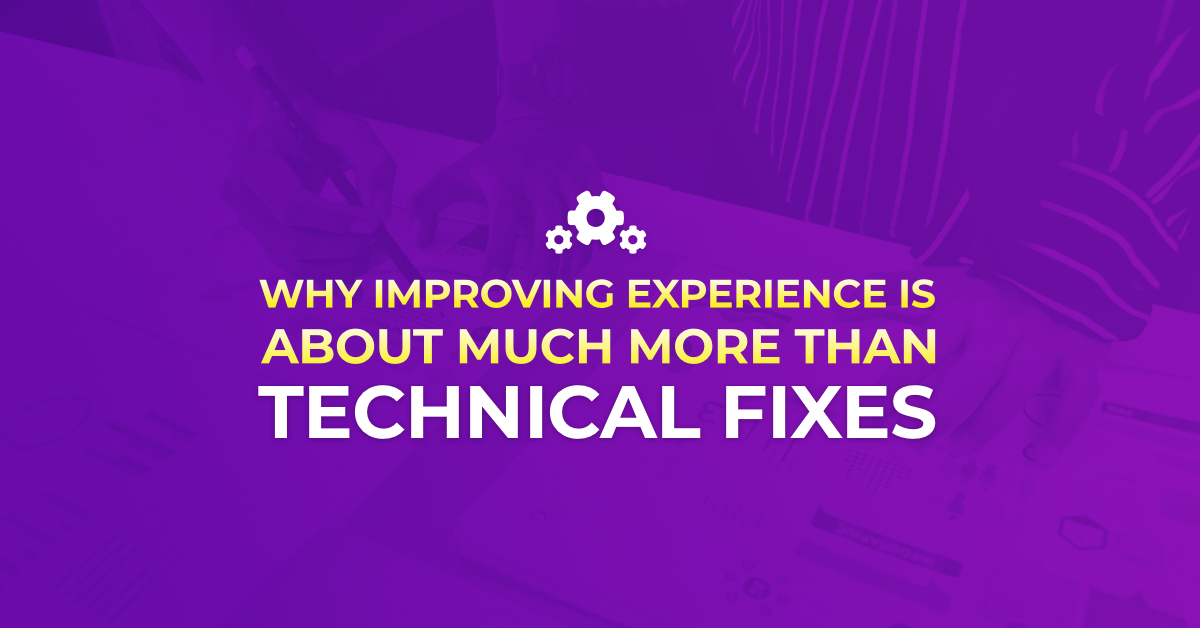The Google Search Experience Update is rolling out across the summer; the latest in a long list of algorithm and policy updates designed to make the Google search results – and the internet as a whole – a faster, more accessible, more secure, more trustworthy place.
For the most part, many of Google’s initiatives to drive improvements in experiential aspects of the search results, have been grounded in technical enhancements and best practice, and the latest update for 2021 follows broadly a similar path. Google wants site owners to improve the speed with which majority of the main content loads (by measuring the largest contentful paint), how quickly pages respond to user interactions (by measuring the first input delay) and smooth and stable the page actually is (by measuring the cumulative layout shift).

For most brands, those issues will likely be addressed by technical and development fixes, such as reducing the size of graphical elements, improving server speeds, making page designs more stable so that content and buttons don’t move around as the rest of the content loads. But we shouldn’t just see experience as a technical exercise, where we can book a ticket into the dev queue and leave it at that.
Technical experience is the foundation, not the end-goal
The danger with that mindset is that the notion of “experience”, at least in the context of search, becomes siloed away in the corporate structure, left to another department to be their problem when in fact, it needs to become everybody’s problem.
The technical basis on which our sites and pages run is clearly a key element in the process, but it is very much the foundation of our digital presence, often sitting below the service, out of view, while the more creative elements of design, on-site search, content, useability and conversion rate optimisation add those incremental gains.
Instead of breaking down search user experience into individual areas of responsibility, we need to consider much broader areas of experience that everyone within the business becomes responsible for. We tend to focus on three key, interconnected areas;
- Customer experience – ensuring that the consumer can find what they want, or do what they want, as easily as possible.
- Technical experience – ensuring that our digital platforms can serve that request.
- Operational experience – ensuring that the experience is delivered to the consumer throughout their journey.
These three areas are so intrinsically entwined, even though they are often delivered by very different teams (and often different agencies) with very different remits and motivations. Every effort you make to help the customer find the product they want more easily can be completely undermined by a poor delivery operation. All the work you put in to improving site speed can be undone by a confusing site navigation or complex checkout page. Investment in reducing customer support waiting times can go to waste if your site continues serving search results for products that are out of stock.
Improving experience means knowing what our audiences want to do – and removing the friction that stops them doing it
All of these points of friction – these barriers that slow or prevent the customer from doing what they want to do – and arguably much bigger issues in the context of user experience than some of the more technical issues that Google’s updates have tended to focus on. Whilst it is understandable that Google emphasises the technical aspects, given that it uses mathematical algorithms to objectively benchmark sites against each other, it is sometimes much more subjective or intangible elements that are the biggest barriers to the customer journey.
But to understand how we address those issues, we need to have a solid understanding of two key issues; why are our audiences searching for what we offer, and what are the elements that prevent them from committing to a decision?
We’ve previously discussed the topic of ‘micro moments’ that trigger a customer search journey, where a consumer has a moment of realisation that they need to do something, know something, go somewhere or buy something, and this is usually the key starting point for any analysis into how our consumers behave.
But it also helps to understand the needs of our audiences in those stages.

Somebody who is on a journey that is triggered by the desire to “go” somewhere may have different needs depending on what they want from that journey. Somebody who wants to go on holiday may be looking to satisfy more emotional needs (to be surprised or impressed), someone looking to go on a family day out may be looking to fulfil more of a social need, whilst someone looking to go to a car mechanic for a repair may be looking for more functional purposes – for reassurance that they can trust the option they choose, for example.
So the experience that we deliver, in terms of the content that we need, the creative that we use, the message that we convey, is very different even though these audiences, on the face of it, are all triggered into a search journey based on their desire to go somewhere.
It also means that the causes of friction in their respective journeys are likely to be different. Consumers displaying more proactive behaviours are likely to respond differently to disruptive elements than consumers displaying more reactive behaviours, and improving our online experience involves understanding those basic needs.
Mapping our customer journeys to find the points of friction
When we understand what our audiences value, we can start to map the types of journeys that they might embark on as they make purchasing decisions and when we understand these journeys, and how our audiences interact with different content and channels, we can identify and address those potential points of friction that might disrupt – or even end – the journey to purchase.

By mapping this process, we can work to ease consumers through each stage of the journey, whilst identifying and addressing potential causes of friction.
If we feel that a consumer may become bewildered by choice, we can find ways to explain the options available and aid their decision making. If we identify that unfavourable product reviews may create friction, we try to allay those concerns.
If we are a brand that is vulnerable to counterfeiters, we can find ways to protect the brand and reassure consumers that they are making a safe and genuine purchase and if we identify delivery as a potential cause of friction, we can consider techniques to allay consumer fears and improve conversion rates.
At the heart of improving experience is addressing consumer anxiety
So much of what we do in the context of experience is about alleviating consumer anxiety – the anxiety that prevents them from committing to a commercial action.
Many of these anxieties may be rooted in operational parts of the experience (“will my order turn up on time?” or “how do I know which size to order?”) or they may be rooted in technical parts of the experience (“this site is loading slowly, maybe it isn’t safe?” or “these pop-ups keep getting in the way”). But there are potentially hundreds of potential causes of anxiety in the purchasing process.
Bad customer reviews, even if they’re the exception rather than the rule, can cause anxiety in the mind of a consumer. A lack of understanding or clarity about what the product is (particularly if it is a complex product or big-ticket purchase) can create anxiety. Small print, or unclear statements on how people’s data might be used, can create anxiety.
How we address those anxieties is the key to this particular conundrum and the Google search experience update deals with just one subset of those anxieties – the part of our consumer brains that asks “is this site safe?”, “can I trust it?” and “can I easily use this site on my mobile?”
It’s easy to look at the Google search experience update and see it as just another technical-based update that you can leave to the SEO and development teams to take care of, but there is so much more to it than that.
The experience update is simply the basis of what good website foundations should be, but they represent something of a minimum standard. The rest, and the bit that really makes you stand out from the crowd, is how you use all the tools in your technical, creative and operational armoury to make the customer feel like they can trust you.

The Google Search Experience Update, rolling out across the summer of 2021, is the latest in a long line of updates from the search engine to encourage a better, safer, faster and more secure online experience.
In this whitepaper we explain how to put user experience at the heart of your search marketing strategy. In identifying the causes of friction that frustrate the customer journey we can make our performance marketing much more effective, making better use of content, media and organic and paid search to deliver greater ROI. Want to find out more?
In this 36 page guide we will cover:
A closer look at the Google Search Experience update.
What it is, how it affects your search marketing strategy and how you need to respond.
Why experience matters.
Why user experience is at the top of the agenda for Google, and why it should be the focus of your performance marketing strategy.
How we can improve flow through the customer journey.
Identifying the pain points and causes of friction in the customer journey, to help our audiences do what they want to do.
Delivering content that enhances the experience.
How we can identify what our audiences want at each stage of the journey.
Improving the performance of search marketing.
How to make sure that organic search and paid media is working in perfect harmony to target the right audiences as efficiently as possible,
